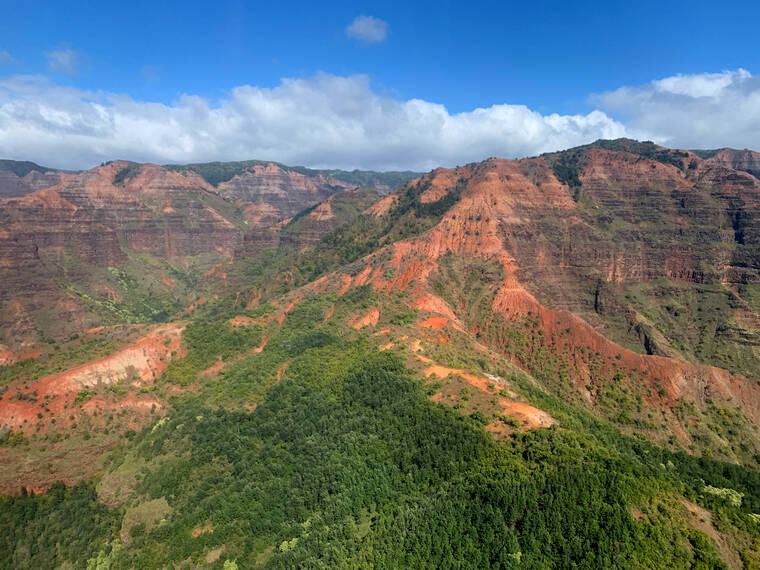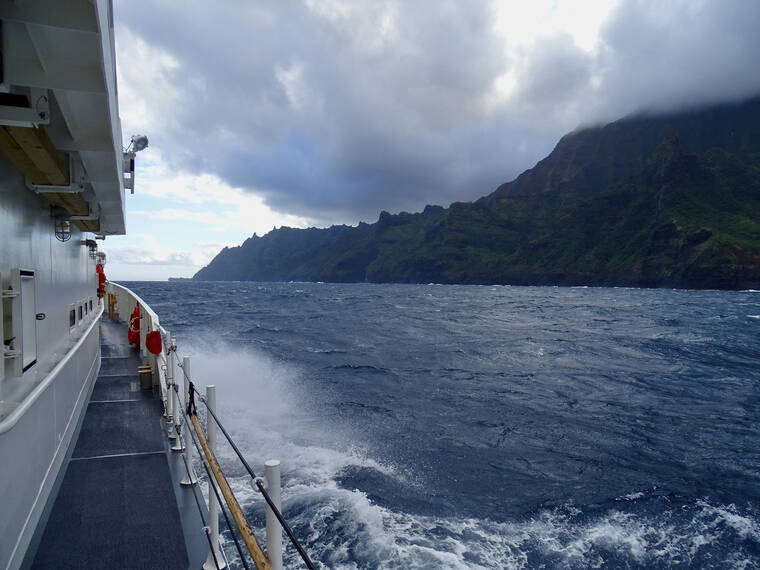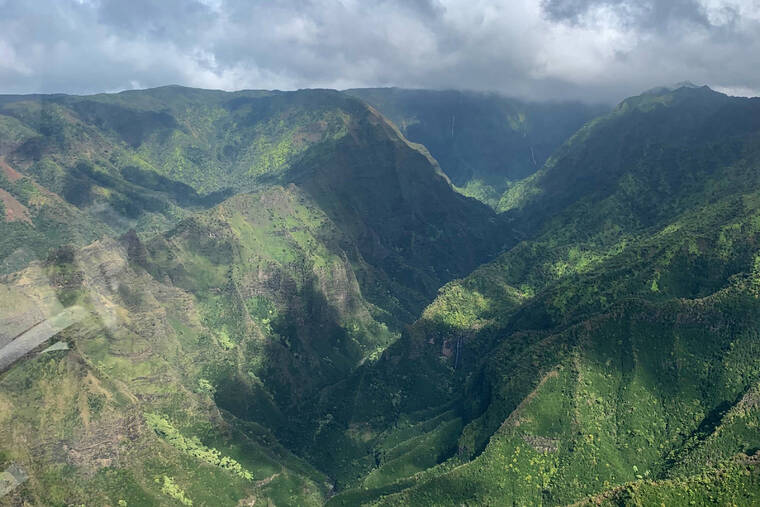HONOLULU — The National Transportation Safety Board released an investigation report Wednesday on a fatal Kaua‘i tour helicopter crash that killed seven people.
The report with more than 1,300 pages said an unusual weather pattern was present in the area on the day of the crash and witnesses reported low visibility with fog and rain. Rescue efforts were hindered because of weather.
Wednesday’s report did not detail a cause for the crash. A report with final conclusions will be released at a later date.
The Safari Helicopters tour of Kaua‘i’s remote Na Pali Coast crashed on a steep, forested slope on December 26, 2019. There were no survivors.
The pilot, 69-year-old Paul Matero, had his license revoked in 2010 after testing positive for marijuana. His certificate was fully reinstated in 2012 after completing required programs.
A toxicology report after the crash found no drugs in Matero’s system.
Matero’s last medical examination was in July 2019 and showed no health problems or medications. The extent of his injuries made autopsy diagnosis of any new disease “extremely limited,” the report said.
Investigators asked company officials about the pilot’s previous weather-related decisions.
Safari’s director of operations, who was not named in the report, said Matero was “the most conservative pilot” on Kaua‘i, according to the report. The director said the company had never received any complaints about Matero.
Kaua‘i, with its steep sea-side cliffs and mountainous terrain, often experiences fast moving weather systems that can change conditions quickly.
Ladd Sanger, a Texas-based aviation attorney and helicopter pilot who has handled several crash cases involving similar helicopters in Hawai‘i, said tour operators on Kaua‘i face unique challenges because of weather and topography.
Kaua‘i “has microclimates, so the weather at the airport is going to be different than up at the crash location,” Sanger told The Associated Press after the 2019 crash. “Those microclimates can come on very quickly and dissipate quickly too, so the weather reporting is difficult.”
Matero was well regarded by passengers, colleagues and aviation officials, the report said.
A former Federal Aviation Administration manager in Honolulu told investigators he was surprised that Matero was in an accident, the report said.
“I didn’t see something like that happening to Paul because I thought he was a pretty straight shooter,” the unnamed FAA official said.
The crash was the latest in a series of fatal aviation tour accidents in Hawai‘i, including a sky diving plane crash that killed 11 on O‘ahu in June of the same year.





2 years later… there was bad weather – ntsb.
2 more years later, rocks are hard – ntsb
2 more years later, rocks are harder than helicopter.
We get to see the evolution of the ntsb
1,500 pages worth of “we don’t know what happened.”
The vast amount of money the taxpayers paid through the Federal, State, and County of Kauai for the emergency response, the year of outside investigations, and the large support staff that resulted in the 1,500 pages of nothing, is regrettable.